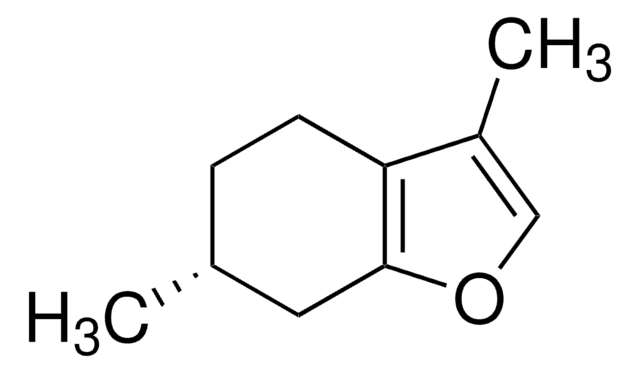Kluczowe dokumenty
About This Item
Polecane produkty
klasa czystości
analytical standard
Poziom jakości
gęstość pary
9.27 (vs air)
ciśnienie pary
1 mmHg ( 133.2 °C)
Próba
≥99.5% (GC)
temp. samozapłonu
446 °F
okres trwałości
limited shelf life, expiry date on the label
metody
HPLC: suitable
gas chromatography (GC): suitable
tw
330 °C (lit.)
mp
30-34 °C (lit.)
32-34 °C
gęstość
0.786 g/mL at 25 °C (lit.)
Zastosowanie
cleaning products
cosmetics
flavors and fragrances
food and beverages
personal care
format
neat
ciąg SMILES
CCCCCCCCCCCCCCCCCCC
InChI
1S/C19H40/c1-3-5-7-9-11-13-15-17-19-18-16-14-12-10-8-6-4-2/h3-19H2,1-2H3
Klucz InChI
LQERIDTXQFOHKA-UHFFFAOYSA-N
Szukasz podobnych produktów? Odwiedź Przewodnik dotyczący porównywania produktów
Powiązane kategorie
Zastosowanie
Polecane produkty
Kod klasy składowania
11 - Combustible Solids
Klasa zagrożenia wodnego (WGK)
WGK 3
Temperatura zapłonu (°F)
212.0 °F - closed cup
Temperatura zapłonu (°C)
100 °C - closed cup
Środki ochrony indywidualnej
Eyeshields, Gloves, type N95 (US)
Wybierz jedną z najnowszych wersji:
Masz już ten produkt?
Dokumenty związane z niedawno zakupionymi produktami zostały zamieszczone w Bibliotece dokumentów.
Klienci oglądali również te produkty
Nasz zespół naukowców ma doświadczenie we wszystkich obszarach badań, w tym w naukach przyrodniczych, materiałoznawstwie, syntezie chemicznej, chromatografii, analityce i wielu innych dziedzinach.
Skontaktuj się z zespołem ds. pomocy technicznej











